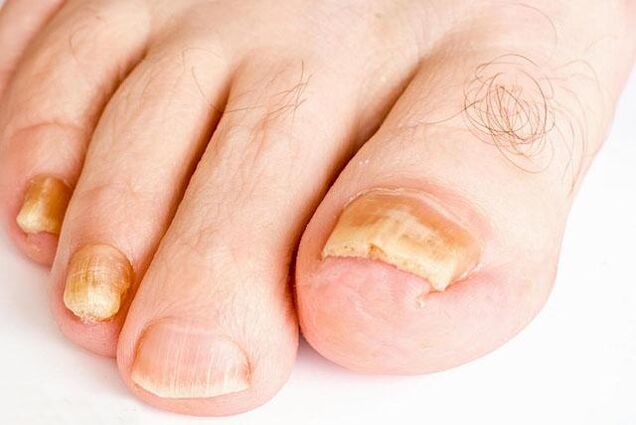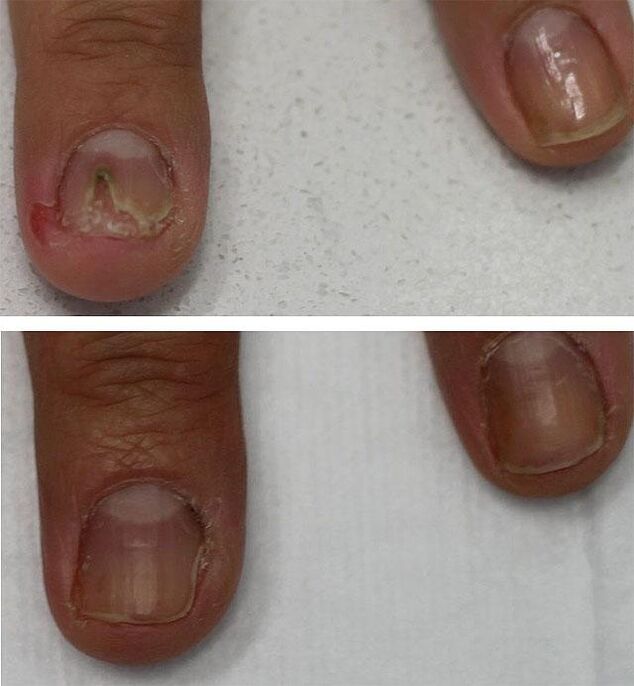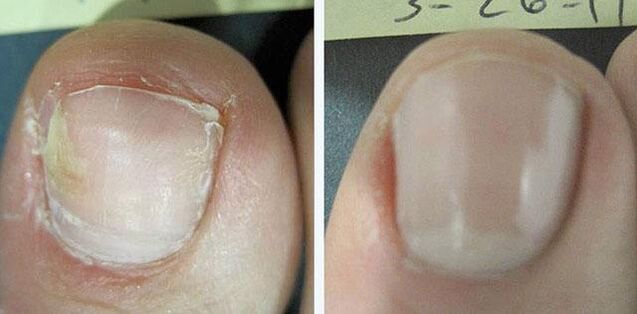
Onychomycosis is a widespread fungal nail disease (up to 18% of the population). It affects people of all ages, and an increase in the number of people affected in the past decade has also been observed among adolescents and children. Because of the high and frequent repetitive contact, the treatment of nail fungus on the hands and feet is a complex and lengthy process.
When does the infection occur?
- In families with general use of shoes, household items (carpets in the bathroom) and body care products (wipes, manicure sets);
- While visiting the pool, showers in the gym and in the company, sauna and bath.
Disease -causing agents
Effective nail fungus treatment is only possible with proper laboratory pathogen diagnosis. In almost 90% of cases, onychomycosis is caused by various types of dermatophytes. Certain species affect the appropriate body parts that are characteristic of:
- toenails and hands, as well as any part of the skin;
- nails on the feet and skin of the interdigital space III-IV, the arch of the foot, the upper third of the sole of the foot, the lateral surface of the toes.
In more rare cases, the disease is caused by other types of fungi - trichophytos, epidermophytos, more rarely - such as yeast. Rarely, onychomycosis is caused by a fungus that affects the nails in the first toe area, especially in people over 50 years of age.
Contributing factor
Good conditions for the identification and development of infection:
- Damage to the nail plate and surrounding skin. This often happens as a result of wearing tight shoes, cosmetic procedures.
- Fractures of the fingers and bones of the feet or hands.
- Swelling of the legs with heart disease, atherosclerosis of the lower legs, varicose veins, Raynaud's disease (arterial spasm in the upper legs).
- Endocrine diseases (especially diabetes mellitus).
- Pregnancy (due to hormonal changes and decreased immunity).
- Decreases general immunity.
- Congenital anomalies in the formation of the skin stratum corneum.
- Severe and long -term chronic diseases that reduce the body's defenses.
- Long-term treatment with corticosteroids and antibiotics, systemic diseases and others.
The possibility of transmission of the infection to the body itself by blood and lymph has been proven.
Diagnostics of onychomycosis
Diagnosis of fungal infections based on local and general clinical manifestations and laboratory research.

Clinical manifestation
The symptoms are very varied and depend on the type and type of pathogen. Separately, toenails (80%) and hands can be affected; less common is the simultaneous defeat of the nails on the bottom and top.
Depending on the nature of the changes on the nail plate, 4 forms of damage are distinguished:
- Normotrophic- characterized by a yellowish staining on the tip end of the nail plate. It becomes dull and thickened due to the stratum corneum of the epidermis (subungual hyperkeratosis). The shape of the affected nail does not change for a long time.
- Hypertrophic, where the nails become yellowish and thicken, the edges are loosened. Transverse rebukes gradually emerged. The nail plate became gray and dull dirty. In some cases, it (usually on the first toe) thickens, becoming long and curved like a bird’s claw or beak (onychogryphosis).
- Atropic- dull, gray or yellow nails. They deformed, collapsing at the ends, partially displaying the bed. The latter is covered with a loose layer of stratum corneum.
- Onycholysis- remove the nail plate from the bed. With this form of fungal infection, the normal color only stays in the root area. The rest of the nails become thinner, detached from the bed, lose their luster and become yellowish or grayish.
Combined forms are often observed. The clinical manifestations listed are not specific to specific types of fungal lesions. They can also suffer from diseases not related to the fungus.
Some common manifestations may also occur: allergic rash on the body, increased fatigue, and decreased appetite. They are explained by the ability of some types of dermatophytes to cause the reorganization of the body allergies, and fungal fungi - to release toxins, which cause chronic poisoning of the whole body.
Laboratory diagnostics
It consists in the accumulation of material (particles of the epidermal layer, pieces of nails). The extracted material is poured with a caustic alkali solution, left for 24 hours at a temperature of about 20 degrees, after which it is examined under a microscope. This technique makes it possible to make a differential diagnosis between fungal and non -fungal lesions. In the presence of fungi, filaments of various thicknesses and shapes, groups of spores can be seen under a microscope.
Subsequently, the material was inoculated on a special nutrient medium for pathogen growth, followed by identification of its type and determination of sensitivity to antimycotic drugs.
Treatment features
When choosing a method of therapy, the shape, type and degree of lesions, the speed of nail growth, the general condition of the body and the side effects of the drugs used are taken into account, especially if there is a concomitant disease. Based on these principles, the treatment of toenail fungus, as well as on the hands, has a local or complex effect.
Principle of Local Impact
It is possible if:
- the infection does not affect all nails;
- the defeat of each infected nail plate is less than half its area;
- the process is located only at the ends and sides of the plate without involving the roots;
- there are contraindications to the use of systemic drugs.
Local drug treatment
This consists of the use of creams, solutions or nail polishes that contain substances that soften the nail plate. They also include medications for the treatment of nail (hand) fungus, which suppress the growth and development of infections:
You can use any preparation to soften the plate and remove it in layers, as in the first case, and then 2 times a day using a broad-spectrum antifungal drug in the form of a cream or solution. At the same time, it is necessary to rub it into the surrounding skin.

Medical hardware pedicure
Medical pedicures are used as an additional procedure (but not a treatment! ) That shortens the treatment time. The point is to use a router with an attachment in the form of a metal or diamond cutter. This device greatly facilitates the removal of previously softened nails to his bed without pain. The use of hardware methods is recommended when more than 60% of the nail plate area is damaged, but do not replace further drug treatment with antimycotic agents.
Surgery
If there is a severe form of onychomycosis with severe nail deformation, it is sometimes surgically removed under general anesthesia or conduction anesthesia with the use of antifungal drugs. The main disadvantage of this method is damage to the nail, as a result of which the newly grown plate is left behind and has an irregular shape.
Laser treatment
This method consists in heating the nail with laser radiation over a short pulse distance to a temperature of 45-47 degrees, at which point the dermatophyte dies. This procedure is most effective in the early stages of nail damage without deformation. Depending on the severity, it should be done from 1 to 8 sessions with an interval of 7 to 60 days. In severe wounds, local and systemic treatment should be carried out.

Systemic drug therapy
It is indicated for many lesions on the nail, root involvement in the process and if there is no effect of local exposure.
The most effective remedy for treating nail fungus is tablets. contains substances such as terbinafine, fluconazole, and others. They are prescribed in a course for 3-4 months, and remain in the body after the end of treatment for up to 9 months. The last two drugs, due to their toxic effects on the liver, are less frequently used.
Systemic treatment is contraindicated in kidney and liver disease. During pregnancy and lactation, only local treatment with 1-2 nails is possible, but it is better to refrain from this.
























